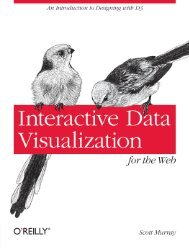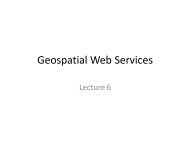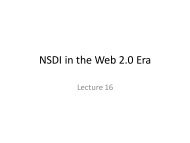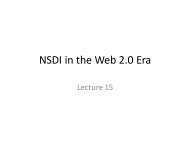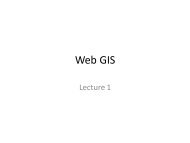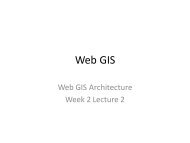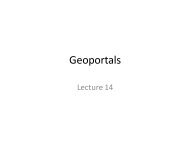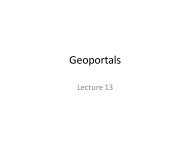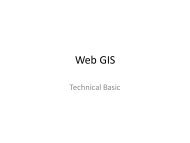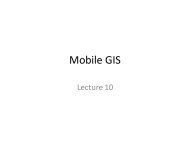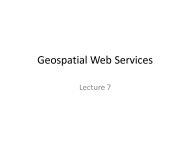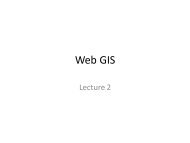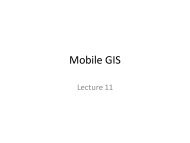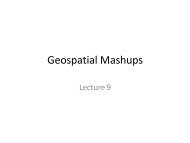geodesign-in-practice
- No tags were found...
You also want an ePaper? Increase the reach of your titles
YUMPU automatically turns print PDFs into web optimized ePapers that Google loves.
The selection process can be further ref<strong>in</strong>ed based on the<br />
requirements of the focal wildlife species for which the corridor<br />
The desert tortoise is among the many animals that would negotiate the<br />
corridors.<br />
is be<strong>in</strong>g designed. Individual wildlife species may require<br />
vary<strong>in</strong>g levels of vegetation diversity and/or density to facilitate<br />
movement. As such, vegetation diversity is a parameter with<strong>in</strong><br />
the ADM that can be used to populate the modeled corridor<br />
with the desired level of variation among plant types. For focal<br />
species, such as the pygmy owl, which requires the presence<br />
of saguaro cacti, the ADM can be parameterized to select the<br />
most optimal plant type for each cell while still meet<strong>in</strong>g the<br />
desired criteria of the focal species. For species like mounta<strong>in</strong><br />
lions, however, which prefer more diverse conditions, the ADM<br />
can derive more assorted assemblages of vegetation through<br />
employ<strong>in</strong>g a random selection algorithm across all optimal and<br />
second-best plant types for each cell until the desired level of<br />
vegetation diversity is achieved.<br />
The ADM employs a similar selection algorithm for determ<strong>in</strong><strong>in</strong>g<br />
the relative density of vegetation with<strong>in</strong> the corridor. For example,<br />
the pygmy owl prefers more densely vegetated conditions.<br />
When these conditions are desired, the ADM selects and<br />
populates all or most of the available cells. Bighorn sheep, on<br />
the other hand, are more comfortable with mov<strong>in</strong>g through<br />
less densely vegetated conditions. In these <strong>in</strong>stances, the<br />
ADM drops cells from be<strong>in</strong>g populated to achieve the desired<br />
condition. Additionally, the ADM can l<strong>in</strong>k vegetation density with<br />
other modeled connectivity outputs, such as flows of wildlife<br />
movement. When l<strong>in</strong>ked with current-flow surfaces of species<br />
movement, for example, the ADM can be parameterized to<br />
populate the corridor <strong>in</strong>terior with greater vegetation density <strong>in</strong><br />
areas where greater species movement has been modeled, and<br />
vice versa.<br />
Vegetation Patterns<br />
The ADM also has the ability to place vegetation <strong>in</strong> patterns that<br />
are known to either facilitate or impede wildlife movement. A<br />
series of pattern generators are employed to alter the relative<br />
Geodesign <strong>in</strong> Practice: Design<strong>in</strong>g a Better World<br />
J10221<br />
Geodesign and Wildlife Corridors<br />
6




